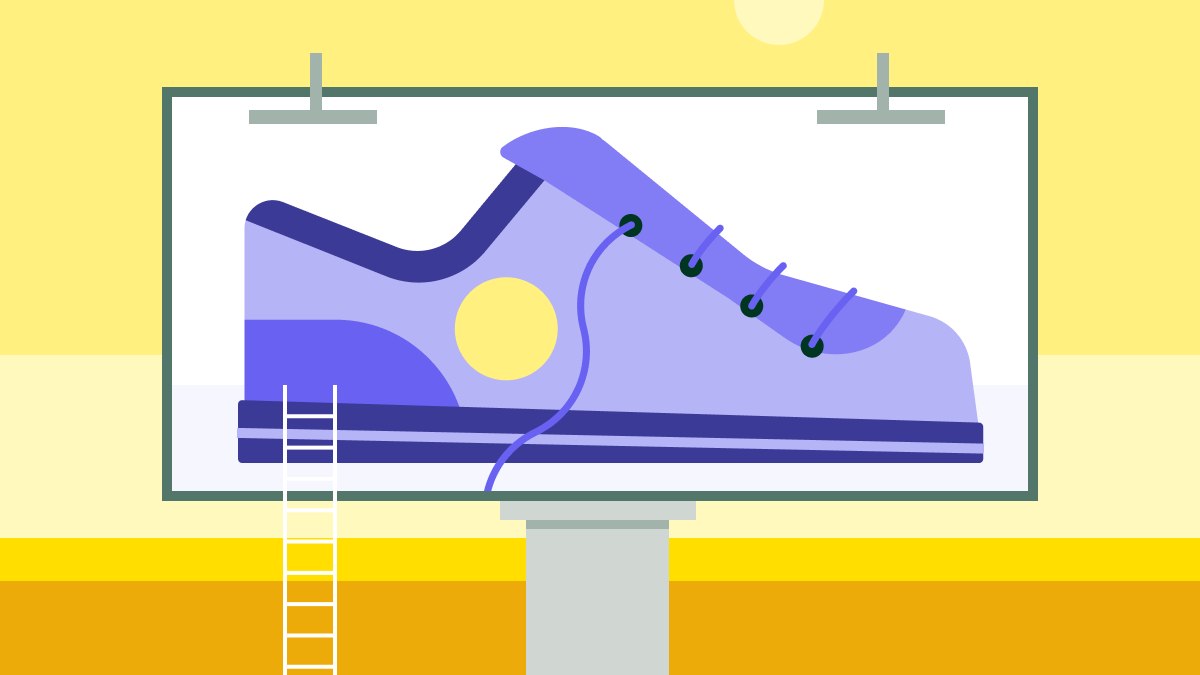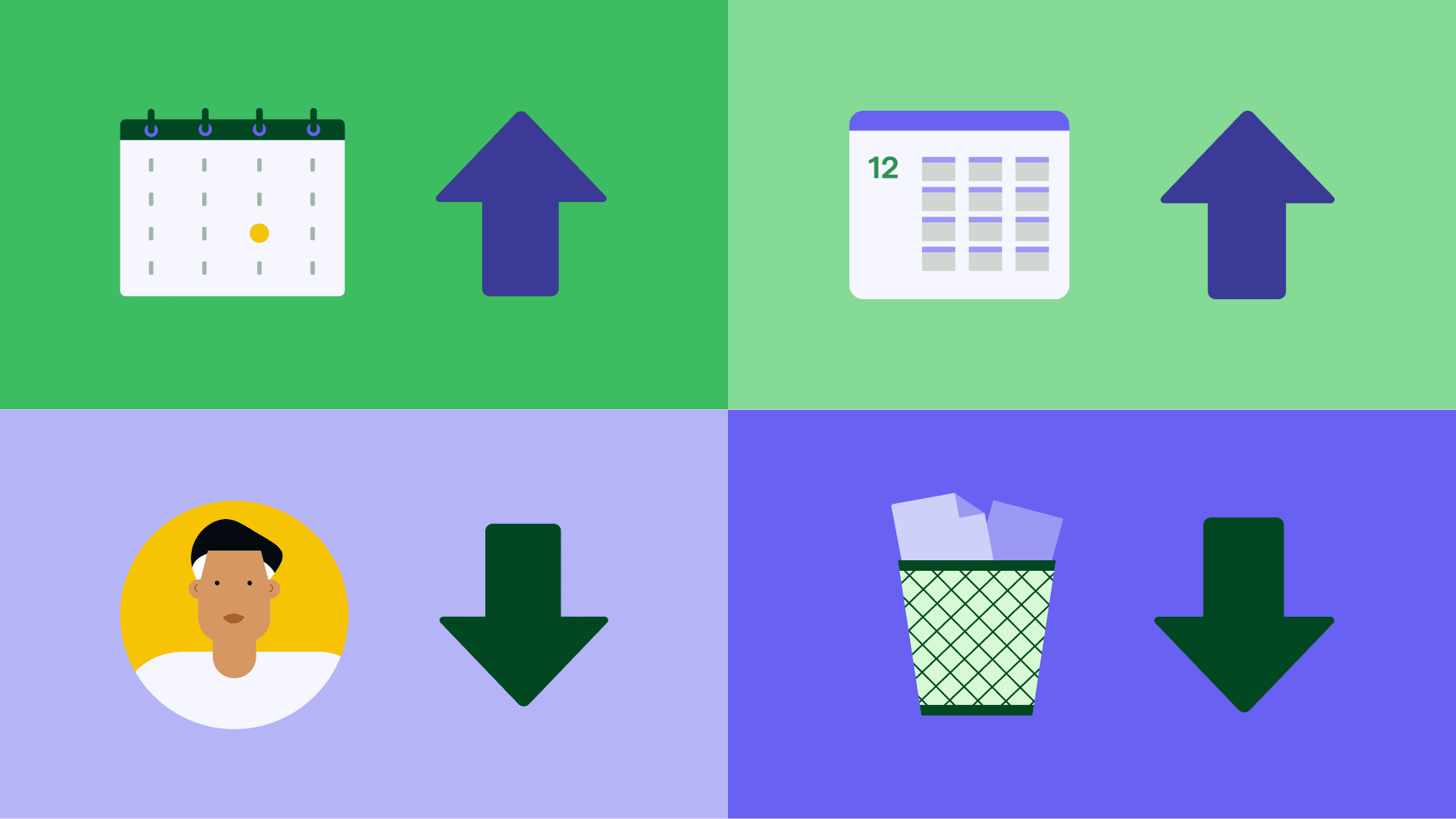Billboard advertising offers small businesses a powerful way to reach audiences while they’re on the move. Billboards build local brand awareness, drive real-world engagement and support digital marketing efforts.
In this article, you’ll learn how billboard advertising works, how pricing works and what makes a campaign successful. You’ll also discover how Pipedrive can help small businesses measure the impact of their offline exposure.
What is billboard advertising?
Billboard advertising is a form of outdoor marketing that uses large-scale displays in high-traffic areas to promote products and services.
Advertising on billboard spaces offers businesses a powerful way to reach audiences on the move. Billboards capture attention quickly, with repeated exposure reinforcing their message over time.
Many companies use billboards to raise brand awareness and support product launches. Billboard marketing can work with digital marketing efforts to create a consistent customer experience.
There are five main types of billboards:
1. Traditional or static | Deliver a fixed message using printed vinyl or paper on large roadside structures. |
2. Digital | Display dynamic content on LED screens, with multiple ads rotating throughout the day. |
3. Mobile or transit | Provide exposure on moving vehicles such as buses, trucks or trailers. |
4. Junior posters | Display smaller-sized messages on street furniture or bus shelters for localized messaging. |
5. Wallscapes | Cover entire building walls with large-format ads for high-impact visibility. |
Here’s an example of a static billboard from the graphic design software Canva:
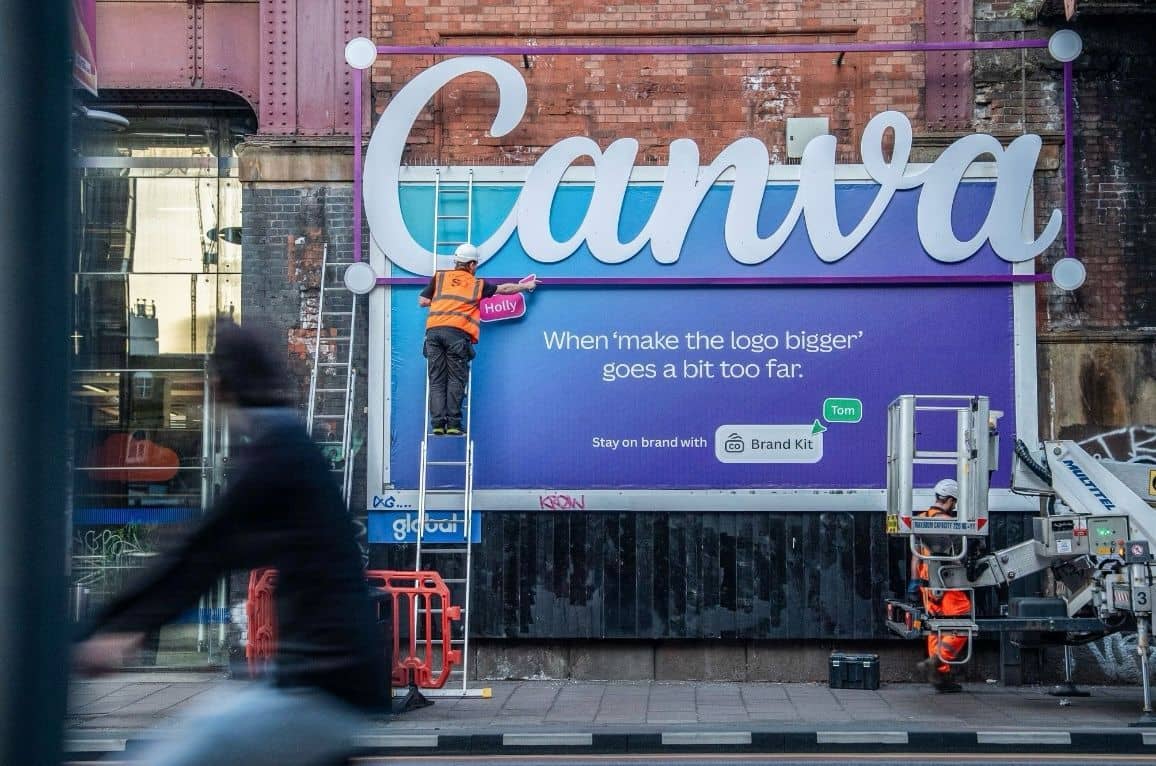
Today, billboard advertising remains an effective way to build brand recognition and drive recall.
The role of billboards in out-of-home advertising
Business billboard advertising is one of the most visible and scalable formats used in out-of-home (OOH) advertising. To understand how billboard advertising reaches wide audiences and drives local brand awareness, it’s useful to look at how OOH works, how businesses access billboard space and which locations offer the strongest advertising opportunities.
An overview of OOH advertising
Out-of-home advertising describes any marketing that reaches consumers outside of their homes. It delivers broad visibility in a range of real-world environments.
For example, an OOH campaign from the fintech platform Ramp included digital billboard advertising, branded buses and even a coffee van.
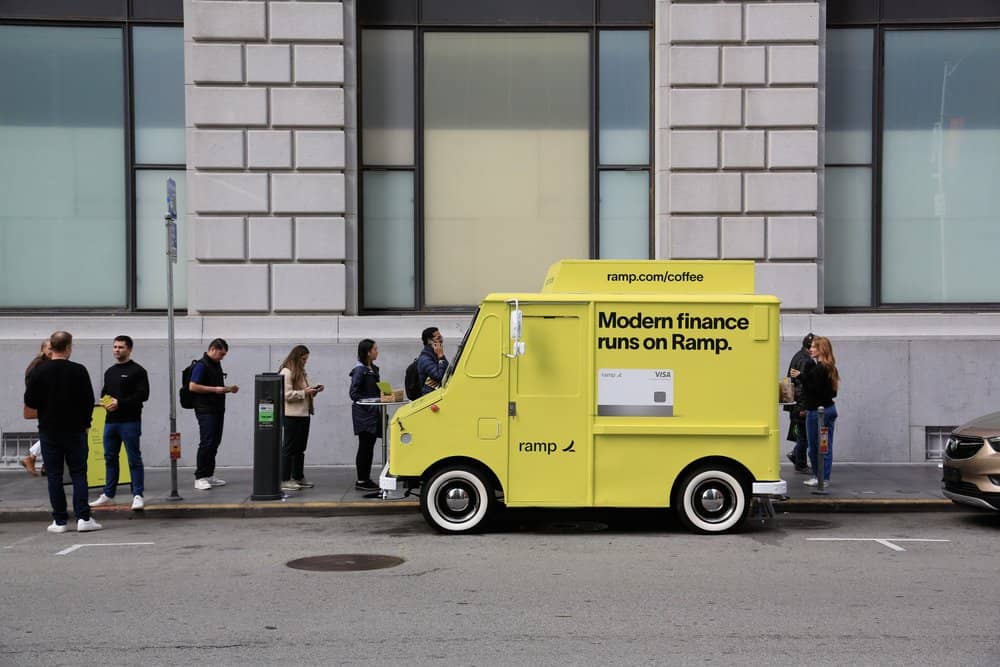
Billboards are one of the most prominent formats in OOH advertising. Depending on a campaign’s goal, they can serve as both branding tools and calls to action.
Note: If you’re wondering how to get billboard advertising working for your small business, it’s something that companies rarely undertake alone. Most businesses work with major vendors to access billboard inventory, book placements and manage OOH campaigns efficiently.
In the US, leading vendors include Lamar Advertising, Clear Channel Outdoor and Outfront Media. Their networks span major US cities such as Houston, NYC, Las Vegas, Atlanta, San Antonio and San Diego.
Notable markets for billboards and other OOH marketing
Billboard advertising takes place in cities of all sizes. Iconic locations like Times Square in New York City and the Sunset Strip in Los Angeles are famous for their high-impact billboards. However, these locations are outside the budget of many independent business owners.
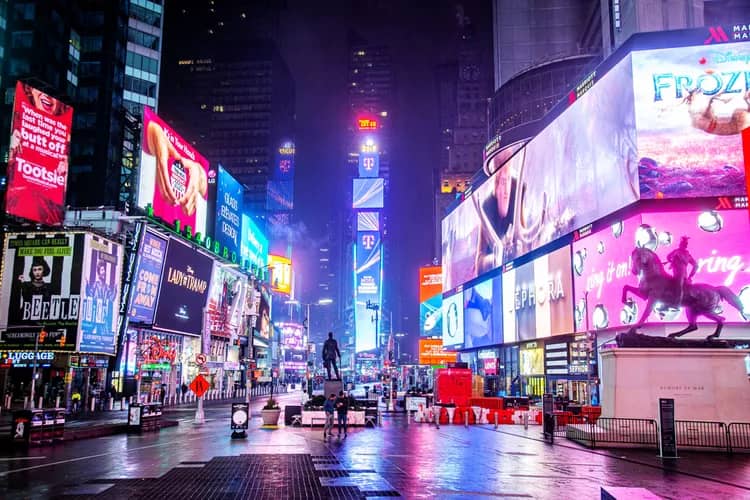
By contrast, San Francisco is a great example of a city with more accessible opportunities for smaller businesses. Startups and small businesses use billboard advertising to target commuters and tech professionals.
These campaigns focus on simple, bold messaging to connect with a tech-savvy target audience. Here’s an example from software analytics company Jellyfish:
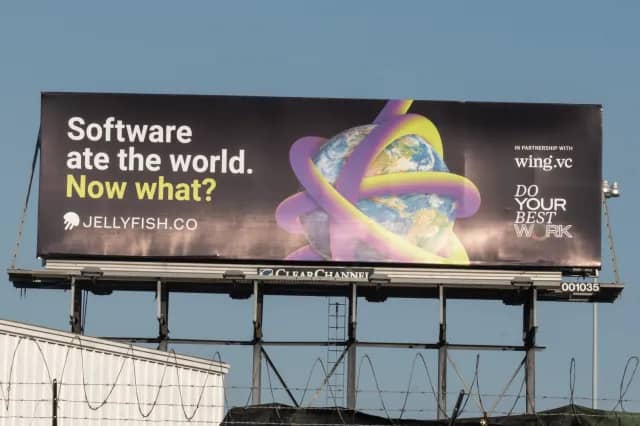
In sprawling cities like Atlanta, Houston and Kansas City that draw workers from surrounding places, small businesses use highway billboards to reach commuters. Billboard campaigns in smaller locations often focus on community visibility and regional events.
Download Your Sales and Marketing Strategy Guide
How billboard advertising can benefit SMBs
Billboards allow companies to advertise in locations where their audience lives, works or commutes. For small businesses, the prospect of reaching their target demographic in this way can be compelling.
Here are some benefits billboard advertising can deliver for small business marketing.
Build brand awareness at scale | Billboards can reach thousands daily in high-traffic areas through repeated exposure. |
Target people on their daily routes, close to your business or service area | Billboards target people on their daily routes, close to your business or service area. |
Increase credibility through public visibility | A billboard presence can signal legitimacy and boost consumer trust. |
Support and amplify digital marketing campaigns | A billboard campaign can reinforce online messaging with offline visibility. |
While billboard marketing can be effective, it’s not the right fit for every small business. It works best for companies looking to scale, grow a local presence or reach a broad customer base.
Businesses with a very limited budget or a hyper-specific audience may have more success with targeted or digital-first marketing strategies.
Billboard advertising costs: what to expect
Billboard advertising costs can vary widely. However, understanding what drives pricing can help you plan more effectively.
What factors influence cost?
Several variables affect the cost of billboard advertising:
Location. Billboards in high-traffic urban areas tend to command the highest price. Visibility from major highways or busy intersections also adds to the cost.
Format. Static billboards are more affordable than digital billboards, which offer greater flexibility and visibility. Pricing for mobile or transit billboards often depends on the route you want the vehicle to take.
Duration. Many billboard contracts run for a minimum of four weeks. Longer campaigns offer better value per week, but they require a larger upfront investment.
Demand. High-demand periods – like holidays or major events – can increase prices, especially in locations with high footfall or limited inventory.
Understanding these factors can help business owners make better-informed and more cost-effective decisions when planning a billboard advertising campaign.
Typical pricing and CPM explained
In billboard advertising, CPM stands for cost per mille or cost per thousand impressions. “Mille” is Latin for the word “thousand”.
CPM is a tool for estimating how much a business should pay to reach a thousand people. Billboard CPM depends on several factors, including:
Traffic volume
Placement visibility
Market size
CPM reflects the estimated exposure a billboard will receive. It plays a key role in setting overall pricing.
This metric also helps businesses compare the relative cost of different billboard advertising options. For example, high-traffic locations and digital formats typically have the highest CPMs.
How to budget for a billboard campaign
Billboard advertising for small businesses requires careful budget management. Here are a few tips to help:
Think local. Focus on one or two well-placed billboards near your business HQ to maximize relevance and response.
Choose the right duration. A four-week ad campaign is standard, but a longer run improves message retention. Look for discounts on multi-month investments.
Consider shared slots. If a full billboard is outside your budget, some providers offer shared slots on static or digital billboards for a lower cost.
Choose vendors carefully. National agencies usually have a broader reach, while local billboard operators may offer better deals and greater flexibility.
With thorough planning, billboard advertising can be a cost-effective part of a broader marketing strategy – even on a modest budget.
Do billboards work? Measuring ROI and effectiveness
Billboard advertising can deliver strong results for small businesses. However, to see real returns from a billboard campaign, you need to monitor performance and measure impact.
Unlike digital ads, billboards don’t offer instant marketing performance data. However, there are still several ways to measure their effectiveness:
Lead tracking | Use unique URLs, promo codes or phone numbers to attribute leads directly to a billboard campaign. |
Brand lift surveys | Measure changes in brand awareness, recall or perception before and after a campaign. |
Web traffic analysis | Track metrics like direct web visitors and branded search volume during and after your billboard campaign. |
Sales data comparison | Look for regional or time-based changes in sales aligned with the billboard’s location and campaign dates. |
Many OOH and outdoor advertising vendors provide real-time campaign management dashboards. These tools allow businesses to monitor performance and evaluate whether to make adjustments.
While connecting the dots can take time, it is possible to measure the impact and value of billboard advertising.
Case studies: success stories from small businesses
Here are two examples of successful small business billboard advertising in action.
Washington Writers Network
Washington Writers Network is a startup that connects clients with high-powered writers from the political and media frontlines of Washington, DC.
The organization displayed junior posters on bike share units in the local area to recruit new writers.
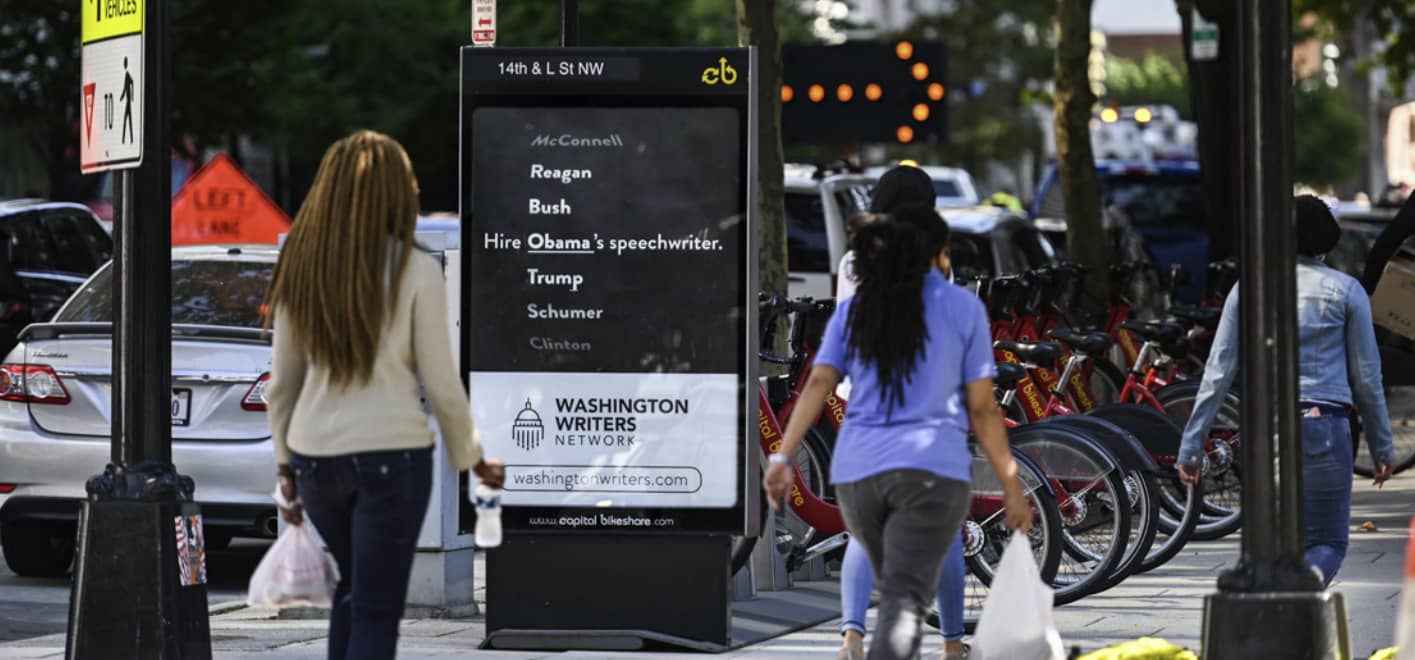
The campaign resulted in 12 new writers joining the Washington Writers Network and 70% revenue growth for the organization.
Forest
Forest is a London-based dockless e-bike hire company. The company uses billboard advertising to communicate how it supports its company mission and share part of its brand story.
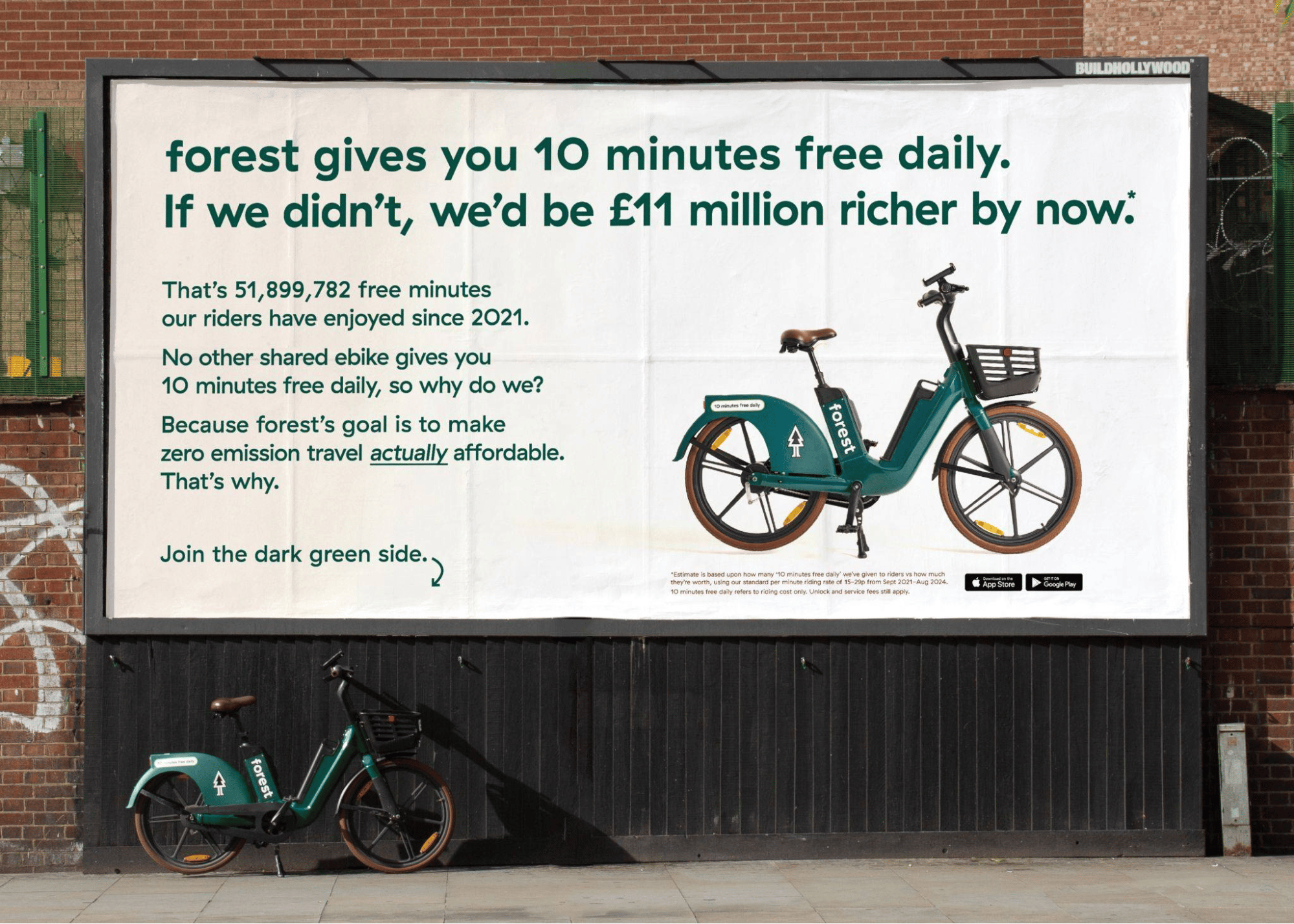
The signs sharing the company’s active support of affordable, zero-emission travel have helped garner market recognition. Research conducted in 2024 showed that 75% of the target market knew of the Forest brand.
Now you’ve seen some successful examples, let’s explore how to get started with billboard advertising for your small business.
The state of sales and marketing 2024
4 steps to get started with billboard advertising
If you’re wondering how to run your first billboard campaign, here are four effective steps to follow.
1. Define your goal
Start with a clear objective. You may want to increase brand awareness, generate leads or promote a product. Whatever the goal, it should shape every aspect of the billboard campaign.
For example, if your goal is to increase brand awareness, your billboard might feature your logo prominently along with bold visuals in line with your brand positioning. The campaign’s focus may be showcasing your brand’s personality without asking for immediate action.
2. Choose location, timing and format
Select a location that reaches your audience at the right time and place. That might be a busy highway, an area near your company headquarters or along a public transit route.
Timing also matters for billboard campaign success. For the greatest impact, plan your campaign around key moments like a product launch or seasonal event.
For example, if you were running a brand awareness campaign for a startup software company, you might launch it ahead of a major industry conference or tech event.
Decide between traditional, digital or mobile formats based on your goal and budget. Digital boards may offer more flexibility, while static billboards can provide longer-lasting exposure.
3. Design the billboard
Your billboard design should be eye-catching, simple and easy to grasp in seconds. Use minimal text, high-contrast colors and clean fonts to make your message stand out.
Remember that passersby have only a moment to absorb what they see. Craft a clear, concise message that will feel immediately relevant to your audience.
For a startup software company focusing on brand awareness, that might mean highlighting your company name and supporting it with a short, memorable tagline.
Software company Twilio’s billboard campaign in San Francisco offers a powerful example:
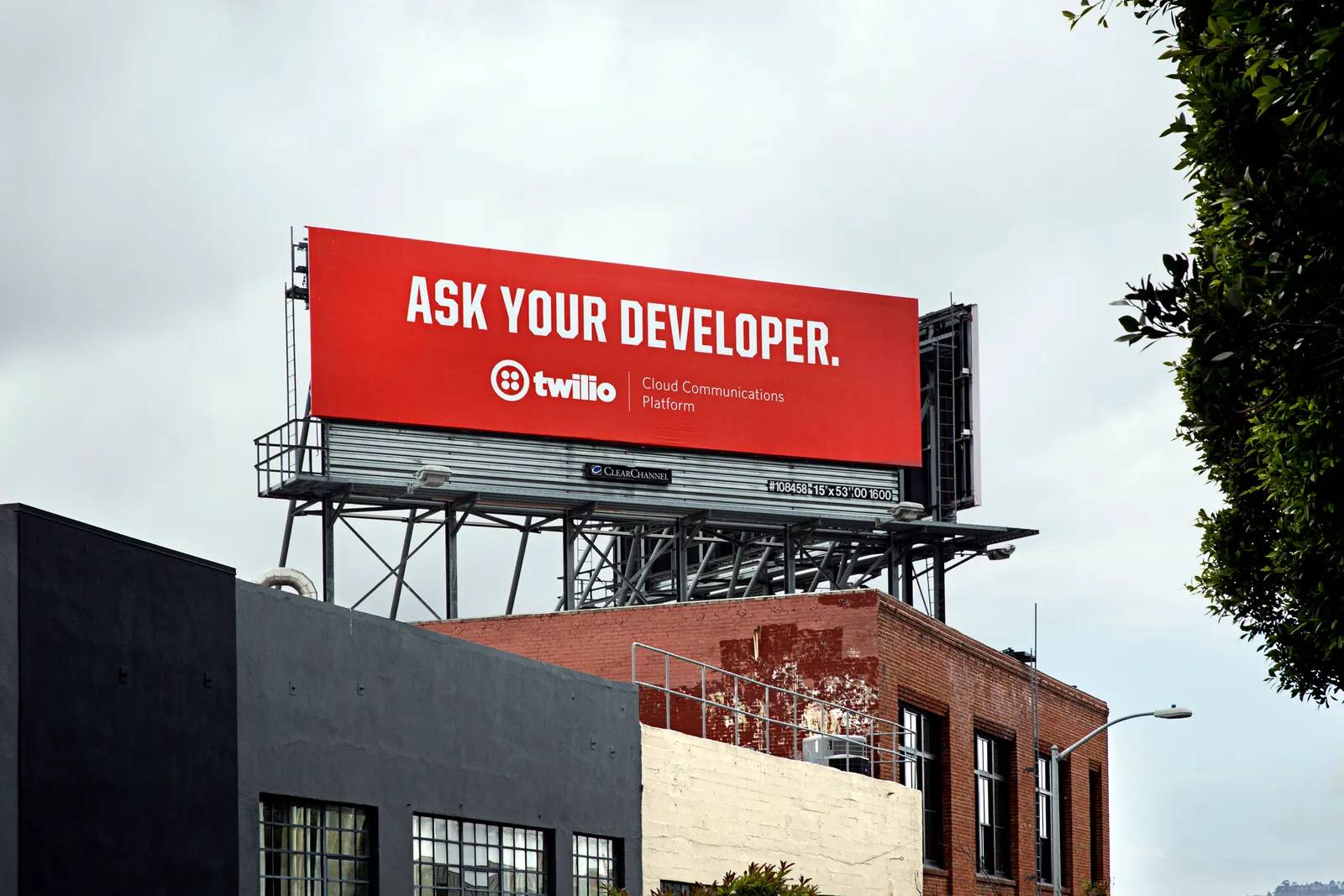
A strong call to action (CTA) is also essential, whether you’re directing viewers to your website, social media or a phone number. Make the next steps obvious and easy to follow.
4. Set budget and timeline
Build your campaign around your available budget and consider how long you want your ad to run. Many billboard contracts start at four weeks, but longer campaign times may align with your goals.
For example, a startup software company running a brand awareness campaign might opt for a six-week run ahead of a major industry event.
Plan ahead if you’re targeting seasonal periods, as availability and pricing can shift quickly during high-demand times. By booking early, you can often secure better rates and locations.
Work with vendors to explore options within your price range or test shorter campaigns before scaling up.
How to track leads from billboard advertising
While billboards don’t offer instant performance metrics, measuring their impact is easier than you might expect.
Here are some proven ways to track leads from billboard advertising.
Use unique URLs, QR codes and phone numbers
One of the simplest ways to track responses to billboard advertising is to create a campaign-specific landing page or URL.
You can also generate a custom phone number or add a QR code to your billboard, directing people to a dedicated page. These tools help you identify which leads came from your billboard campaign.
Tag billboard leads in your CRM system
Once leads from billboard advertising come in, it’s important to tag and track them properly. A CRM like Pipedrive allows you to log the source of each inquiry, providing much-needed visibility about your campaign’s impact.
Over time, the data helps you understand which placements and messages deliver the best return and where to reinvest.
Download Your Sales and Marketing Strategy Guide
Align follow-ups with campaign launch activity
Plan your lead response strategy to match your campaign timeline. If you expect calls or web traffic shortly after launch, ensure your sales team is ready to follow up promptly.
You might also prepare an automated follow-up email sequence or promotional offer connected to your billboard message.
With the right tools and processes, billboard advertising can become a visible and measurable marketing channel.
How Pipedrive helps connect visibility to sales outcomes
Measuring the impact of billboard advertising is only possible with the right tools. That’s where Pipedrive comes in.
Here’s how the sales-focused CRM system helps you tie your billboard marketing activity to real-world outcomes.
Custom lead sources
Pipedrive’s lead management software lets you create and customize lead sources so you can attribute incoming leads to a billboard campaign.
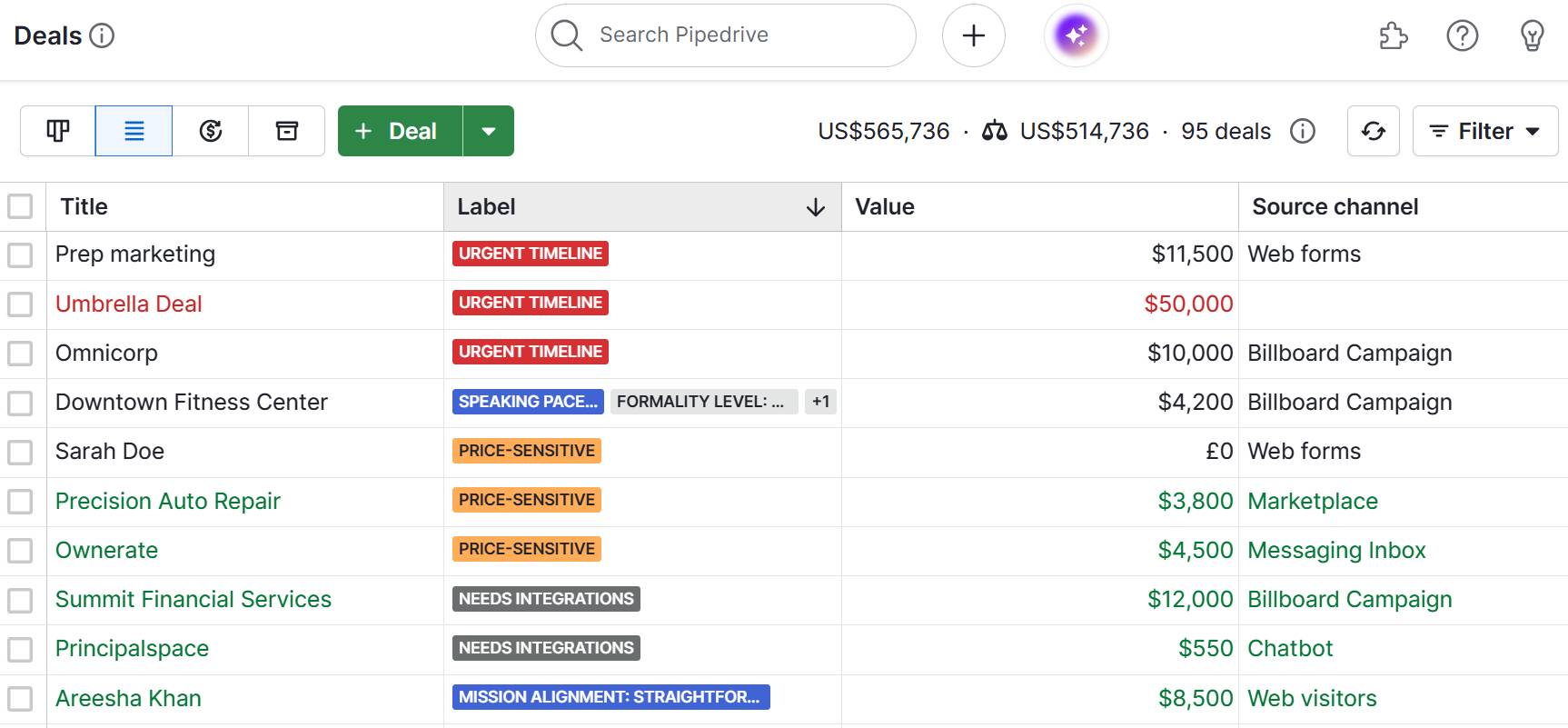
Whether a customer scans a QR code, calls a dedicated number or visits a landing page, you can assign each contact a clear source in Pipedrive.
Follow-up activity automation
With Pipedrive’s automation tools, you can build custom workflows to follow up with billboard leads as soon as they arrive. Set up automatic email sequences, assign leads to the right sales rep or trigger task reminders, so nothing slips through the cracks.
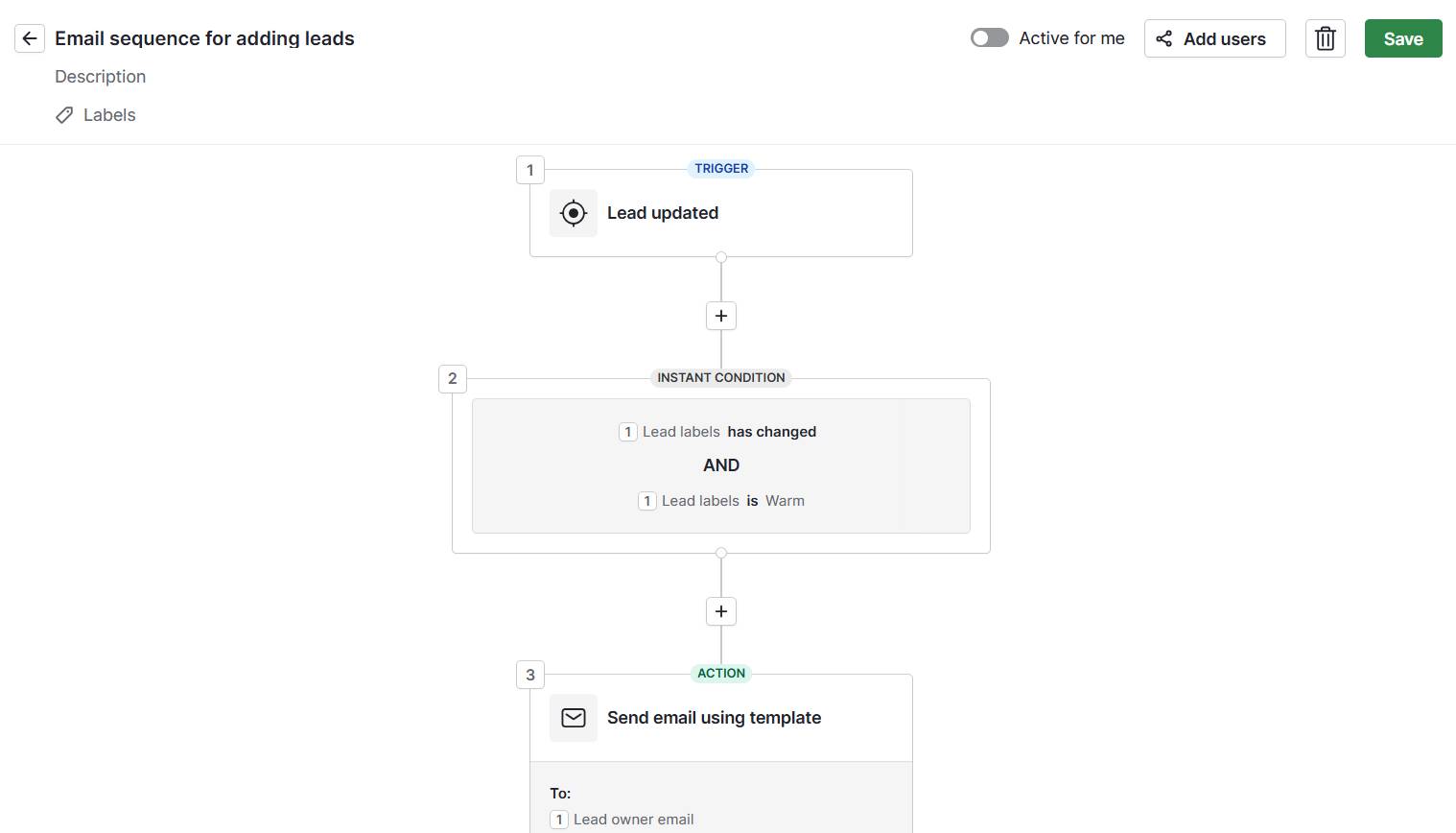
These automations allow you to respond quickly and consistently to customers, maintaining the interest your billboard generated.
Pipeline visualization
Once your billboard leads are in the system, Pipedrive’s pipeline management software allows you to track their progress.
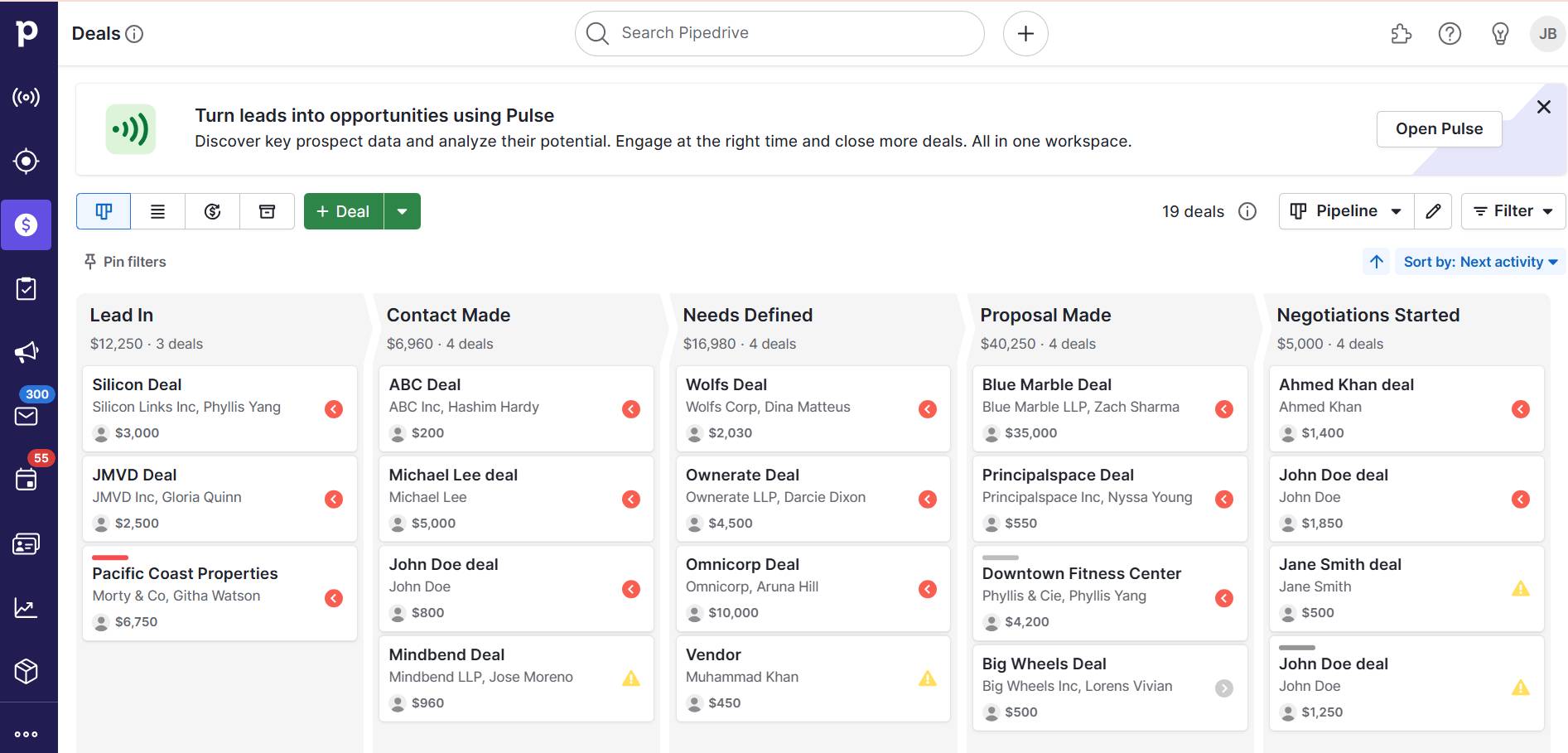
The software’s pipeline view displays every sales funnel stage, from first contact to closed deal.
Deep insights and analytics
Pipedrive’s reports and insights offer an even deeper understanding of billboard ROI.
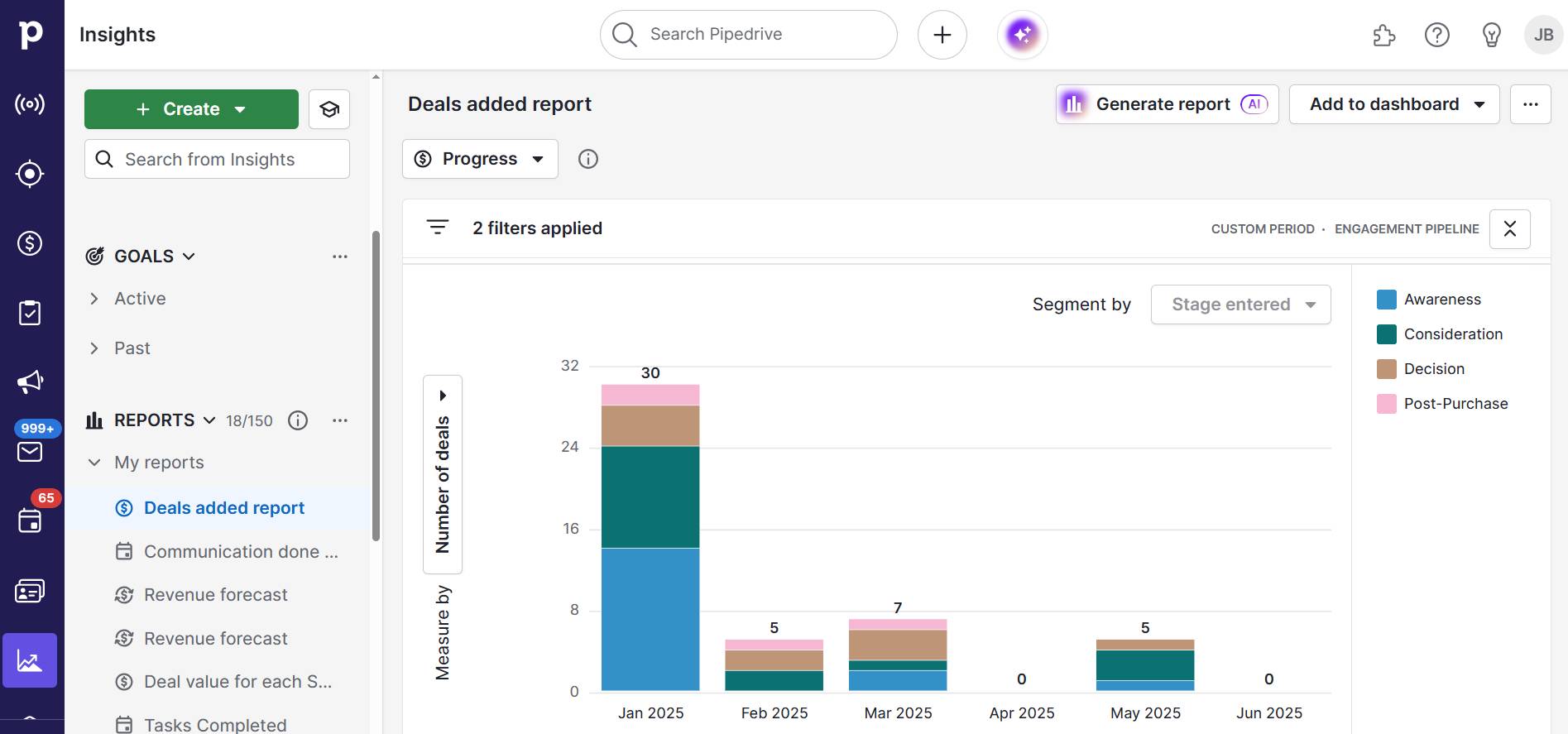
You can monitor conversion rates, deal values and sales velocity by filtering by lead source.
These insights help you measure the return on your billboard investment and make informed decisions about future activity.
Final thoughts
Billboard advertising can be a powerful addition to a small business’s marketing strategy. It helps build brand awareness, reach local audiences and drive engagement.
With the right planning, tools and tracking, billboard campaigns can be more than just a visibility play. They can produce measurable results that directly support your marketing objectives.
A CRM like Pipedrive helps small businesses make the most of billboard advertising by tracking leads, automating follow-ups and connecting offline exposure to tangible outcomes.
Start your free 14-day trial to see how Pipedrive can support your next campaign.
